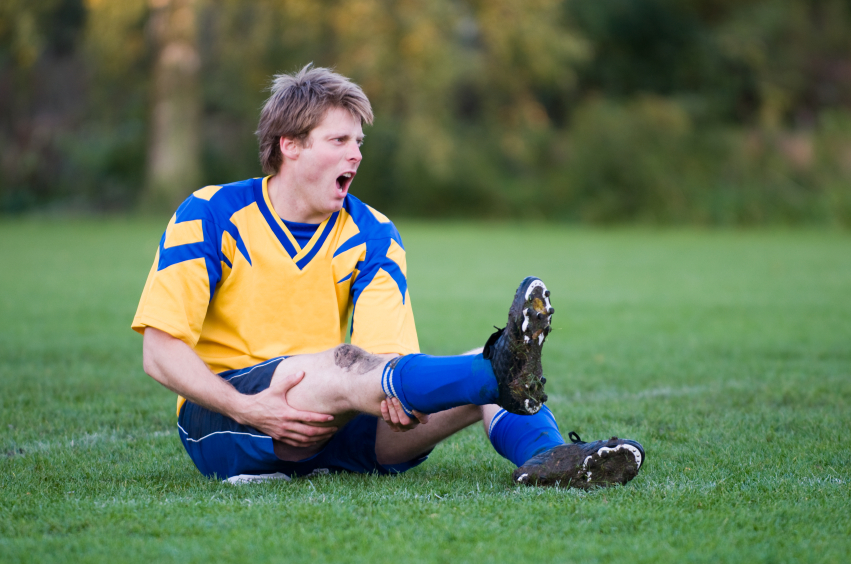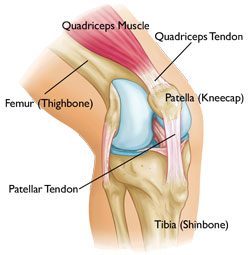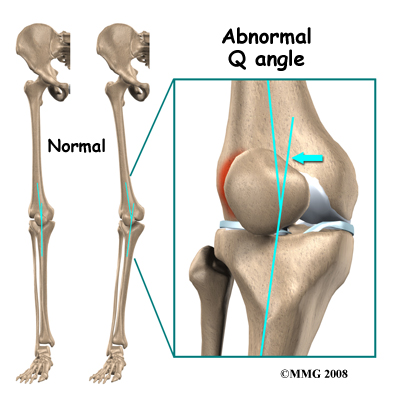Knee pain sucks. It's annoying, it can impair performance, and can be debilitating at times. At 1RM, we are seeing and hearing about tons of high school athletes who are suffering from chronic knee pain. It goes under the disguise of many names; some call it Anterior knee pain, others Patellofemoral pain syndrome, and still others know it as Jumper's knee. It's a tricky one to deal with, but we have some tips that can hopefully decrease your pain.

Generally, you know you have Anterior knee pain when you get pains around the front of the knee, specifically, just below the patella (kneecap) or behind it. The good news is that you can do something about it; the bad news is that it's usually caused by overuse within a dysfunctional movement pattern. That means that rest and reastablishing proper loading and movement through your knee and hip is one of the best ways to alleviate the pain. We realize sometimes taking weeks off isn't an option, so our goal is to alleviate some pain through proper training.
During the summer or pre-season, we see very limited knee pain. Athletes are strength training 2-3x per week and practicing their sport 1-2x a week. Once season starts, these pain-free athletes begin experiencing symptoms because now they are practicing or competing 5 days a week and strength training sporadically. Consistency is key in eliminating these issues.
To understand how to alleviate some pain, we need to understand some anatomy. The patella is a free floating bone on the front of the knee that is held in place by two tendons: the Patellar tendon and the quadriceps tendon. The Patellar tendon connects the patella to the tibia while the quadricep tendon connects the patella to the quad. The patella acts as a sort of fulcrum for the femur and the tibia, increasing force of the quad.

Substantial loads are placed on the patella; 2-3 times your bodyweight when walking and up to 5 times your bodyweight when running. Now imagine how much load is placed on the knees when jumping, especially in tall athletes. If their strength is inadequate and the knee and foot sit decentrated, stress will be placed on the tendons and ligaments (for example, the Patellar tendon). A lot of professionals will simply suggest strengthening the hips, but what does that really mean? Let's look at the specifics. Weak hip abductors and extensors can lead to anterior knee pain. Specifically, that's the glute med, glute min, and Tensor Fascia Latae. Think posterior chain here, or the musculature on your back side. This is generally paired with tight or overactive hip flexors and adductors. If you take one thing away from this, remember this: pain isn't normal. athletes with knee pain consistently have weak/underactive butts and hamstrings and tight/overactive hip flexors and groins.
How do you test Glute strength and Hip flexor tightness?
Hip extensor strength test: You can test glute strength by laying on a flat surface and raising one quad off the ground. Have a friend gently press down on your hamstring and attempt to resist them. Your goal is to resist as long as possible. If you are unable to resist some light pressure, you could have some glute weakness. In the video, our intern Phillip is applying resistance to Johnny. As you can see, Phillip is applying a good amount of pressure and Johnny does a solid job of resisting. He probably doesn't have a big issue with glute strength.
Thomas test: This is an easy way to check tightness of the hip flexors. Lay on a flat surface with your legs dangling off the end. Slowly bring your right knee to your chest and hold gently. If the left leg lifts off when you pull your right knee to your chest, then usually you have tight or overactive hip flexors. In this video, Johhny has some tightness in his hips (you can see his left leg raise).
Another reason athletes can suffer from Anterior knee pain is from abnormal tracking of the patella. This is oftentimes due to a neuromuscular issue. If you have ever trained with Bobby, you would know that he focuses on repatterning the neuromuscular system through a technique called Dynamic Neuromuscular Stabilization (DNS). This is a complex topic and not one that is easily incorporated into your own training with out a professional. He will be adding an article on the topic in a future post. The picture below gives you an idea of a patella tracking abnormally.

How do you treat Anterior knee pain?
If you have Anterior knee pain, now you have a little backgound on what is going on. But where do you go from there? Obviously training at 1RM is a great option :) but there are things to incorporate before practice that could help immensly.
A deeper look into understanding knee pain
All joints have ideal positions. When a knee is sitting let's say "out of alignment" or "decentrated" there will be pain. At this point most clinicians say to instantly refer out. However, by understanding where the ideal position is, for the knee, ie. patella should tracking/staying in line with your middle toe and not really traveling to far in front of the foot, you can aleviate the pain almost instantly. We hear time and time again as a strength coach to refer out with any pain. We have the top chiro in the nation down the block from the gym, of course we refer out. However, if we see the issue, know that it's not that severe/dibilitating and just a movement dysfunction, fix it and move on. If you grasp it, understand it, and own it, DNS provides the most in depth understanding of movement, and how to correct movement patterns.
When an athlete is static or dynamic, their patella will follow the same tracking pattern. This is a result of neural developmental issues, that really arent to difficult to correct if your working with someone that knows what to look for uses DNS in their practice.
If you are reading this and have knee pain take a look at your knee in the mirror, see where your knee is sitting in relation to your toes? if you can't tell, take a picture and send it over! We'll be happy to help. Where is sits is a tell tale sign of where you have dysfunction.
Myofasical release
First, you need to do some type of myofascial release, whether that be rolling on a lacrosse ball or foam roller or having a teammate release you. Think 30 seconds per spot, hold in the painful ones.
Mobility Work
Then we need to add in some mobility drills. All athletes are different, but some key areas to address are Adductors (groin) and Hip flexors. You will generally know if your adductors are tight. If you make a cringing face like Johnny or Phillip in the videos, you fall into this category. Make sure you assess whether this is a chronic issue, or just some soreness due to a previous workout.
Ankle Mobility 2 x 10 per leg
Adductor squat hold 2 x 30 second holds
Adductor dynamic stretch 2 x 5 per side
Banded Hip flexor hold 2 x 30 seconds per side
Posterior chain Strengthening
Finally, you should incorporate some posterior chain exercises into your pre-practice routine or pre-workouts. The primary goal of these exercises is to strengthen the glutes and posterior chain. Remember, these are great exercises to start retraining the glutes. The goal is to reduce pain and increase strength.
Resisted Clam shell - 3 x 5 per leg
Banded Glute Bridge - 2 x 10
Glute band walks - 2 x 10 yards
Isometric lunge hold - 2 x 15 sec per leg, actively squeezing your butt cheek of the back leg
Standing knee drive - 2 x 10 per leg
Banded OH squat - 2 x 10
Eccentric Single leg squat - 3 x 10 per leg
Obviously this article is not all encompassing on how to assess and deal with Anterior knee pain. These are just tools to use with the goal of decreasing pain and returning you to competition. If you take one thing away from this, remember this: athletes with knee pain consistently have weak/underactive butts and hamstrings and tight/overactive hip flexors and groins.